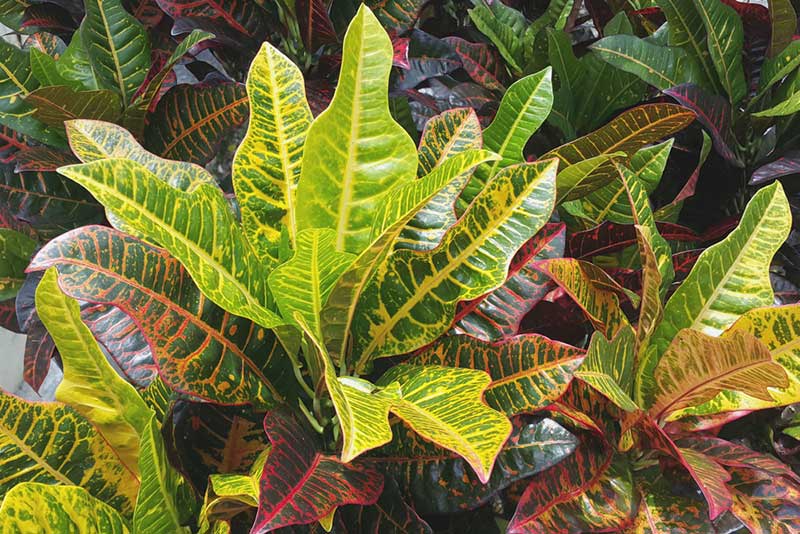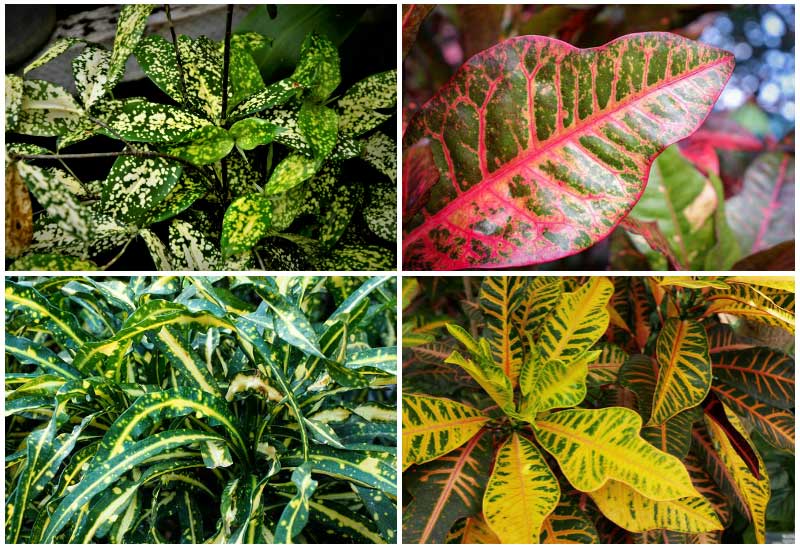Crotons (scientific name for croton: Codiaeum variegatum) are stunning shrubs that grow to be five to six feet tall.
The coloration is simply stunning, and it adds an exotic touch to your home or garden. The first time I brought home a croton plant I was thrilled at how it looked in my home, but shortly after the journey home, the plant began to drop its leaves.
I was worried that it was being caused by something I did; perhaps I was not caring for the tropical plant properly.
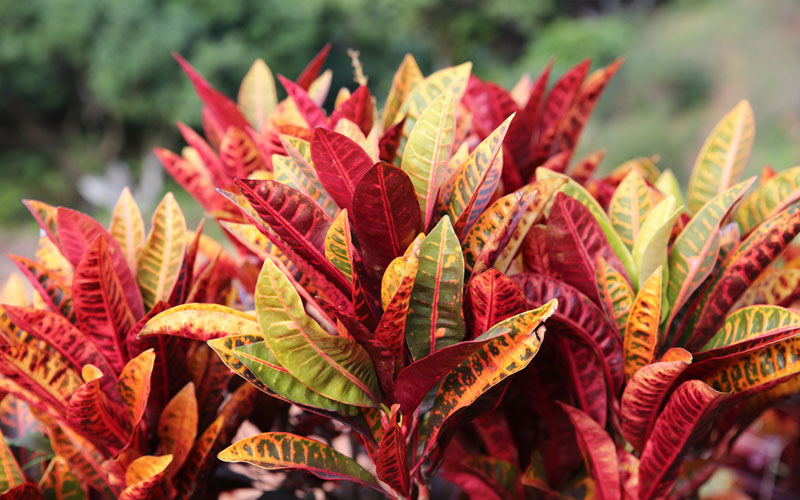
Croton Varieties Include: Sloppy Painter, Gold Dust, Red Bravo, Stoplight and Corkscrew.
I had always heard that croton plants are extremely resilient tropical plants that can be grown in almost any indoor environment, so what happened to my croton? It turns out that they simply do not like to be moved, and the trip caused the plant to go into shock and drop all of its leaves. This guide is designed to share information about crotons that you may not be aware of and help you care for them properly.
Growing Croton Indoors and Outdoors
Crotons are tropical plants that thrive outdoors in warm temperate areas. These plants do not like cold weather, so make sure that the temperature remains above 60 degrees Fahrenheit all year. Humidity is also tolerated by the croton plant, so areas like Florida will present the perfect outdoor growing space. If you live in an area where it gets cold outside for a few months out of the year, then you will need to grow the plant indoors where you can control the environment that the plant lives in. It rarely flowers when grown indoors, but the foliage on a croton is striking.
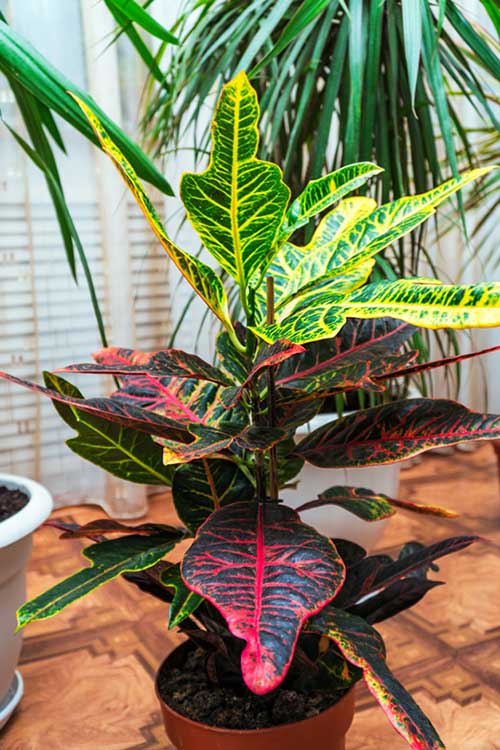
How to Plant and Care for Croton Plants
Croton plants can be temperamental. They don’t like to be moved, and they love direct sunlight, and when they are cared for properly, they look absolutely stunning.
These tips will help you provide them with the care that they need.
Soil – Croton plants require rich soil. I use a combination of organic compost and peat moss. These plants require soil that drains well; they do not like to sit in a pool of water though, so the pot also needs to be able to drain as well.
Fertilizer – Fertilizing croton plants will encourage growth in these plants, but there is no need to feed them more than once a month. The fertilizer should be high in nitrogen and potassium, but feeding the plant too much can cause the leaves to dull and damage the roots. During the winter months when the plant is dormant, you can decrease the amount of fertilizer you give to the plant as well as feed it less frequently. One feeding every other month should be sufficient.
Water – You will need to water your croton plants rather frequently during the growing season. They require the soil to be constantly moist, so when the top begins to feel dry, the plant must be watered again. In addition, these plants like a humid environment. If you cannot find a location that provides this type of atmosphere, then you need to mist the leaves to create it artificially. During the winter months, the watering requirements will decrease, so be careful not to overwater your plants.
Sunlight – These plants require six to eight hours of direct sunlight a day to produce gorgeous yellow, red, and purple foliage. It is best to position a croton plant in an east or west window to ensure that it gets enough sunlight. If the plant is lacking the light it requires, the leaves will turn green.
Temperature and Weather Conditions – Crotons like warm weather, and they tend to grow best in an environment that is around 70 degrees Fahrenheit. Temperatures below 60 degrees Fahrenheit or chilly drafts of air can cause the plant to lose its leaves, and it is possible that it may even die.
Propagation
Croton propagation is simple; all that is required is that you create a cutting from the top of the plant and place it in soil to take root. One caveat though; this new plant will require warmth to take root so you may need to create a greenhouse atmosphere for it to grow. One method of creating this effect is to use a plastic bag to cover the plant. Make sure to water the plant before you put the bag over it; the new plant should not need to be watered again until new growth begins to form and the plant takes root. You can also use seeds to plant new croton plants.
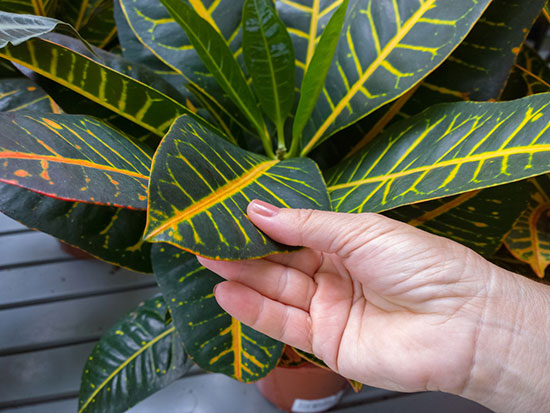
Common Problems That Croton Plants Experience
Mealybugs, spider mites, and caterpillars are all pests that can cause damage to the croton plant, they may cause losing leaves. To get rid of small pests such as these, you can wash your plants with a gentle soap and water mixture, and then rinse the plants to remove the soap.
Croton plants are vulnerable to a series of bacterial and fungal diseases that can hinder the growth of these plants. The plants need moist soil to live, but if the soil is wet, that can create root rot and other similar issues. Once a disease is seen in the plant, you will need to transplant it into a new pot, wash the planter, and make sure the roots are free of disease.
Croton Plants Can be Poisonous (Caution)
Crotons can be harmful plants to have around your home, especially if you have children or pets living with you. The milky sap that is inside the stem of the plant is toxic. The sap will cause indigestion distress, but it is typically not fatal for dogs, cats, or small children. Ingesting the sap-filled seed pod can be a fatal mistake, so keep croton plants away from toddlers and pets who may be curious.
Croton plants have breathtaking foliage, but they can be more than you bargained for. This plant tends to have a temper when it is moved, and it can poison small cats, dogs, or children with its sap. If you have a croton in your home, make sure that it is placed in a location where its beauty can truly be appreciated.
Related Articles





